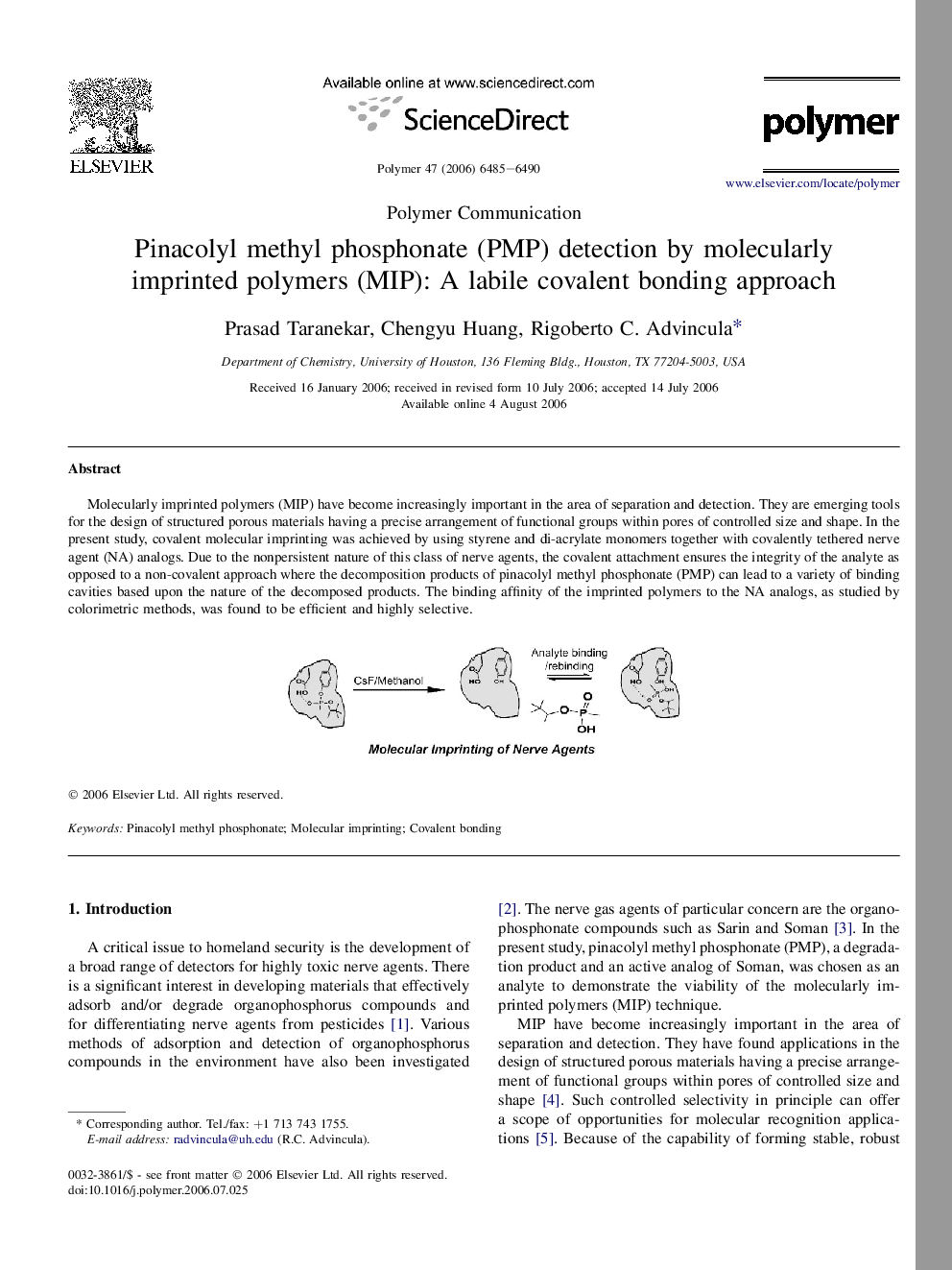| Article ID | Journal | Published Year | Pages | File Type |
|---|---|---|---|---|
| 5186674 | Polymer | 2006 | 6 Pages |
Molecularly imprinted polymers (MIP) have become increasingly important in the area of separation and detection. They are emerging tools for the design of structured porous materials having a precise arrangement of functional groups within pores of controlled size and shape. In the present study, covalent molecular imprinting was achieved by using styrene and di-acrylate monomers together with covalently tethered nerve agent (NA) analogs. Due to the nonpersistent nature of this class of nerve agents, the covalent attachment ensures the integrity of the analyte as opposed to a non-covalent approach where the decomposition products of pinacolyl methyl phosphonate (PMP) can lead to a variety of binding cavities based upon the nature of the decomposed products. The binding affinity of the imprinted polymers to the NA analogs, as studied by colorimetric methods, was found to be efficient and highly selective.Download full-size image
